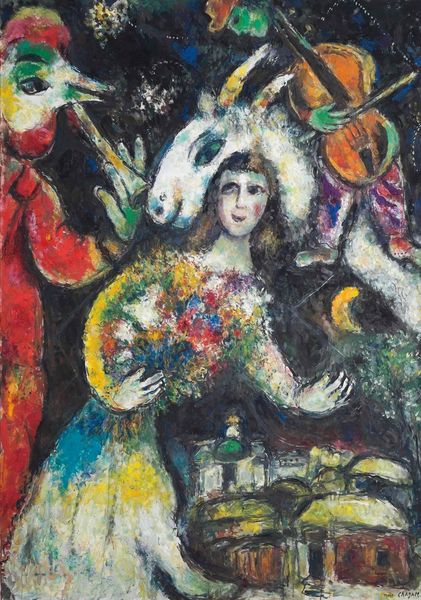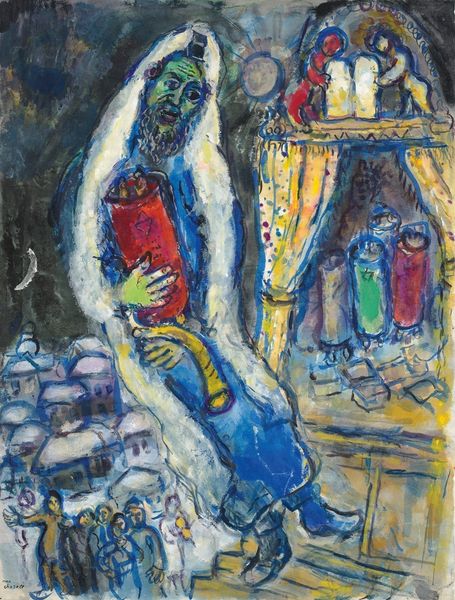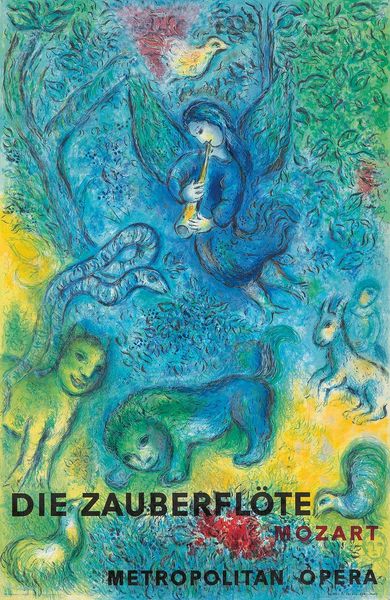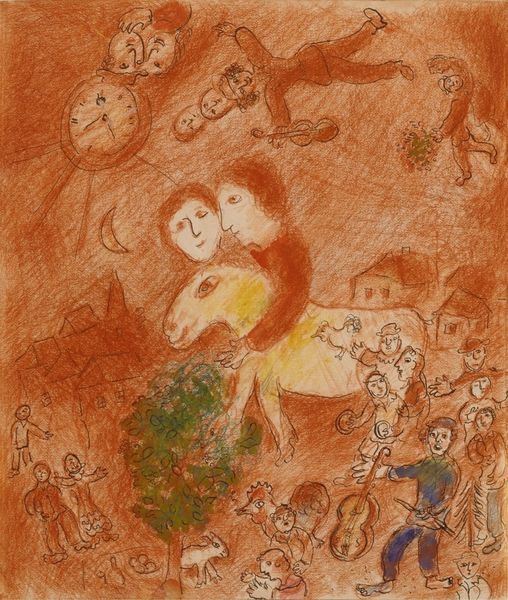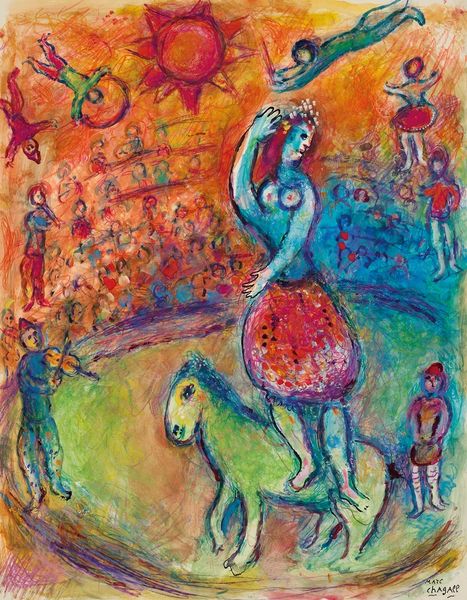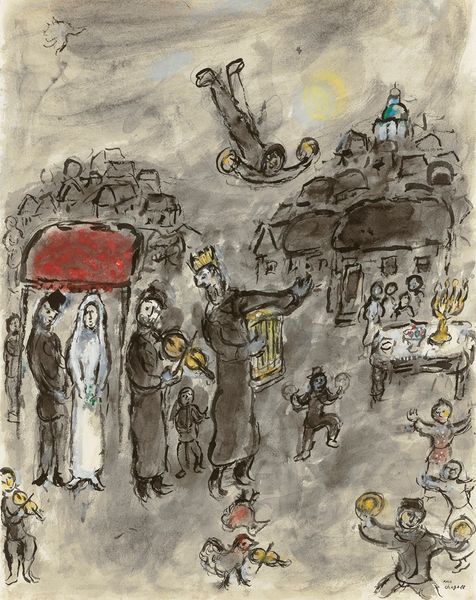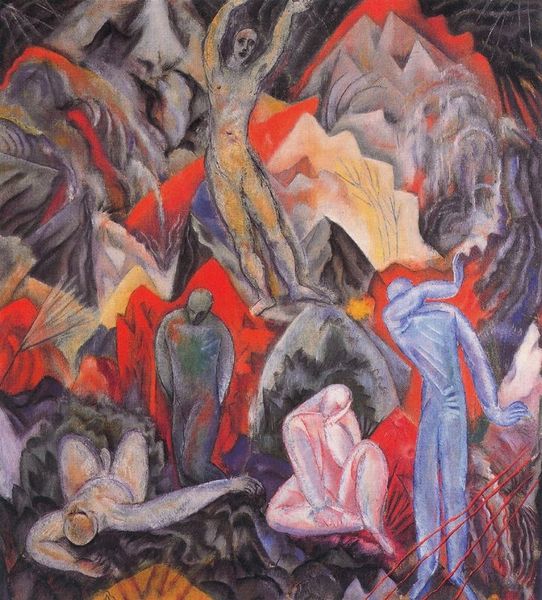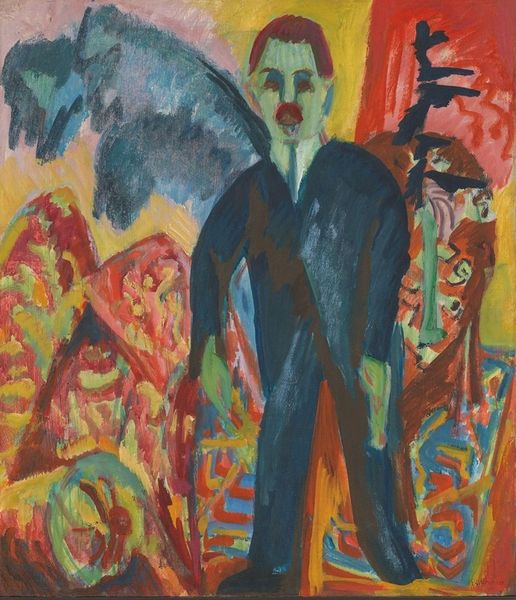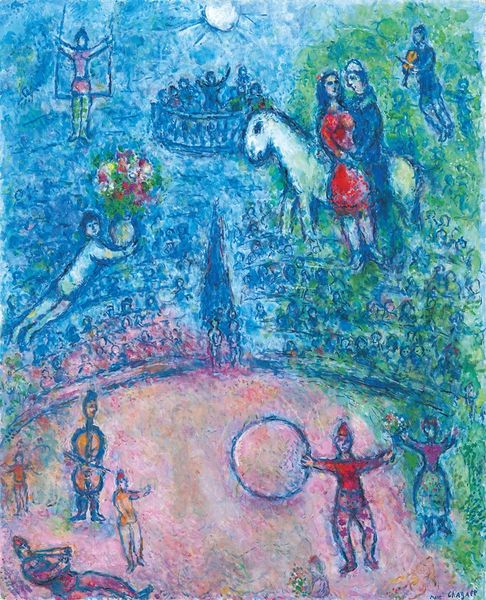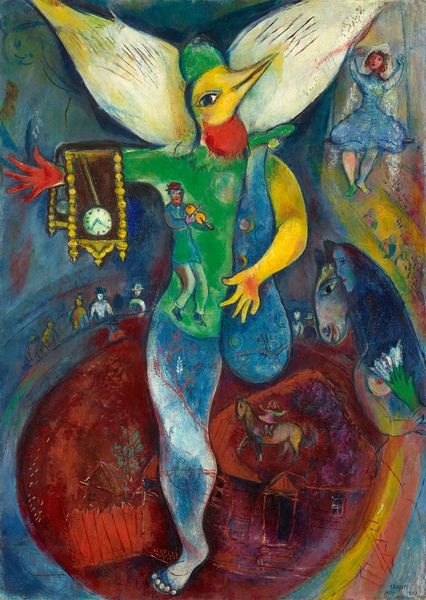
Copyright: Modern Artists: Artvee
Editor: We're looking at Chagall's "Moïse et le veau d’Or" – or "Moses and the Golden Calf" – painted around 1966. It seems so turbulent and brooding, yet oddly tender with Moses clutching those tablets. What leaps out at you in this piece? Curator: Turbulent, yes, like a memory wrestling with itself! See how Chagall layers color, almost scrubbing it onto the canvas? It's like he's excavating the emotional core of the story. It’s not just about religious dogma; it's about temptation, faith, and, let’s be honest, human frailty. And the Golden Calf looming above... a fiery, almost comical symbol of our wandering desires. Don’t you think it adds a touch of irony? Editor: Absolutely, it does seem satirical! The crowd below feels lost too. They have very defined reactions. But the scale and palette is something new for this subject matter. How do you think the figures create emotion? Curator: Look closely, each figure is reduced to their basic essence. Think about Moses with the horns! The composition reflects chaos, doesn’t it? A direct visual language for mass dissent? Perhaps it suggests that we, as a public, struggle to navigate these complexities even today? But what would Chagall, with his floating lovers and fiddlers, have made of our digital golden calves? Editor: Food for thought, indeed! I love the way Chagall transforms a well-known story into something deeply personal and emotionally charged. It’s made me think about history as something that lives and breathes within us. Curator: Precisely. It seems as though painting, or life, only really bursts into true being if we are courageous and find our own unique language of the soul.
Comments
No comments
Be the first to comment and join the conversation on the ultimate creative platform.
